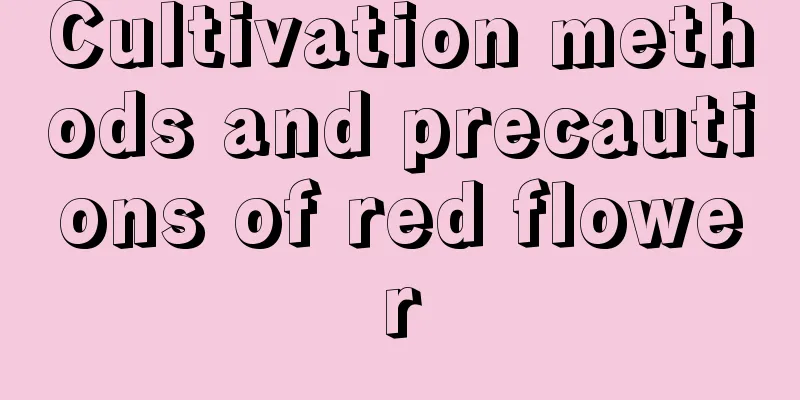Cultivation methods and precautions of red flower

1. SoilThe red flower genus is very resistant to barrenness and has a very strong adaptability. It can grow even in very poor soil. However, if we usually raise it at home, it is best to put some decomposed fertilizer in its planting soil so that it can grow better. 2. WateringA moist environment is more suitable for growth, but it should not be too humid. When cultivating, we must pay attention to watering and keep the soil in the pot moist, but not too wet, and we must not allow water to accumulate in the soil. In addition to watering in midsummer, you can also spray some water around it. Winter is a dormant period, so try to reduce watering and ensure the soil in the pot is not too dry. 3. LightingIt likes to grow in an environment with plenty of sunlight, but it is also very shade-tolerant. So it can grow well under any conditions, but when we grow it normally, it is best to put it in a sunny place, because only when there is sufficient sunlight will its flowers be more brightly colored. IV. PrecautionsAlthough it likes sunshine very much, when the temperature is high in summer, it is still necessary to protect it from such strong sunlight to prevent sunburn. It has a strong growth ability. In order to make it more ornamental, we should prune its branches appropriately so that it can always maintain a beautiful shape. |
Recommend
How to grow potted Rhododendron scabra? Cultivation methods and maintenance matters
Cultivation method of shandandan flower in pot 1....
How to switch from hydroponics to soil cultivation
How to transfer hydroponic plants to soil culture...
What's the problem with the potted gardenia not growing buds (what fertilizer to use for gardenia to grow buds and bloom)
First, the soil causes the lack of flower buds Th...
Where do Tremella seeds come from?
How do Tremella seeds come from? Under suitable c...
What should be paid attention to in winter protection of tree roses (Winter management precautions for tree roses)
I believe many flower lovers are familiar with tr...
How to plant gentian
Soil selection: Choose moist sandy soil rich in o...
Does Pyracantha prefer shade or sun?
Does Pyracantha prefer shade or sun? Pyracantha i...
Take out a handful of cores from the pillow and throw them into the flowerpot, and the green ivy and spider plant will grow wildly!
A handful of buckwheat husk can grow 10 pots of g...
How and when to plant motherwort
The suitable planting time of motherwort Early-ma...
Can succulents be exposed to the sun?
1. Whether you can get sun exposure Succulent pla...
Endless Summer potting method and steps
Endless Summer Potting Time Endless Summer is usu...
What to do if the roots of succulent plants rot
1. Mild root rot 1. If root rot is caused by exce...
Can lucky bamboo be exposed to the sun? Can lucky bamboo be placed in the bedroom?
1. Whether you can get sun exposure Lucky bamboo ...
What does the number of roses represent?
1 rose represents -- I only have you in my heart,...
Dahlia Pest Control Methods
Acanthocephala dahliae symptom The locust, common...









